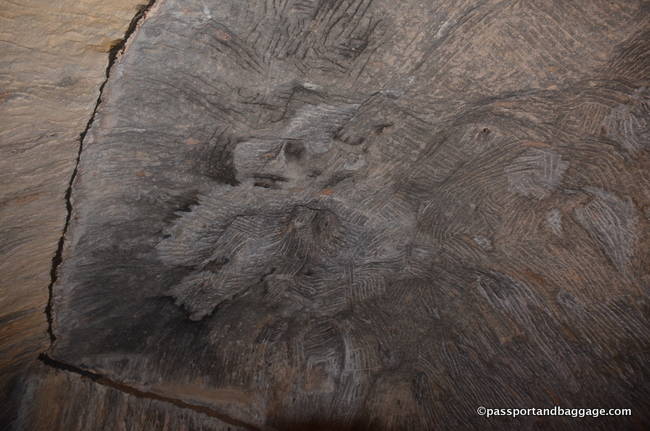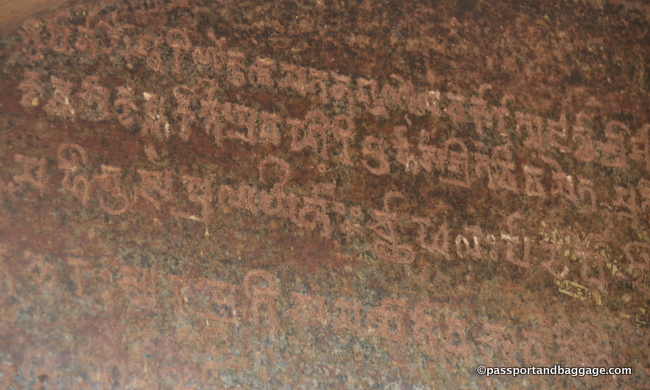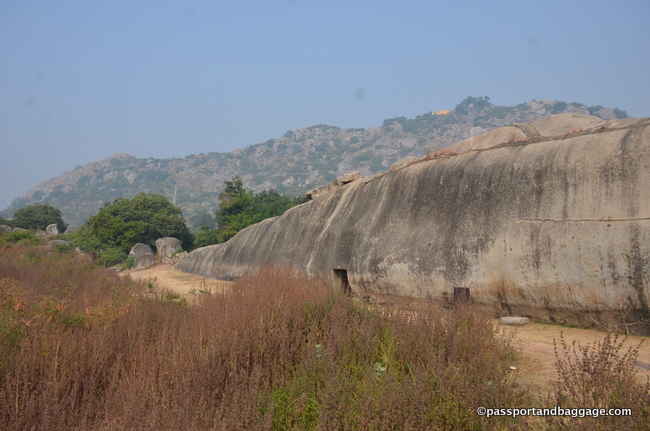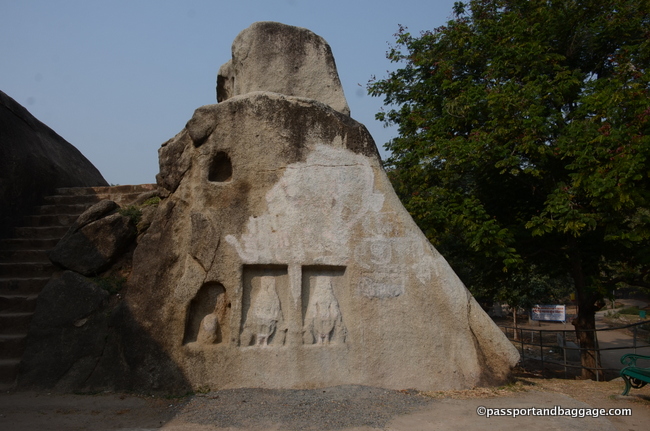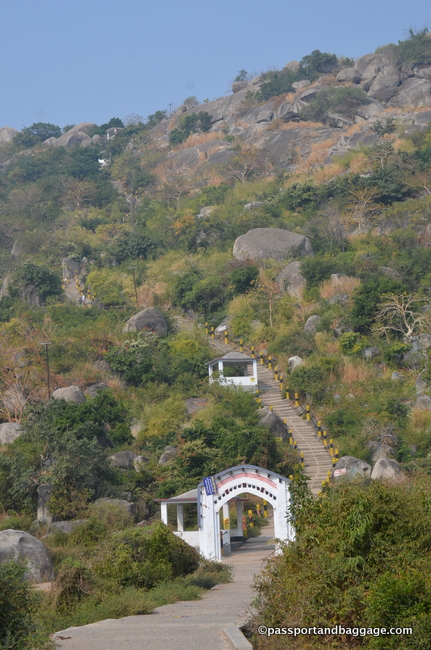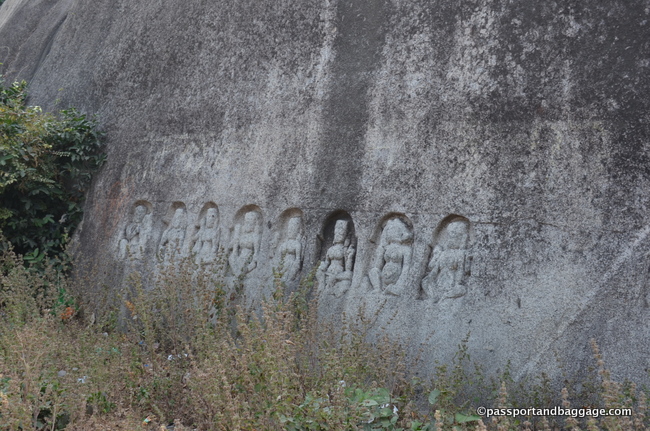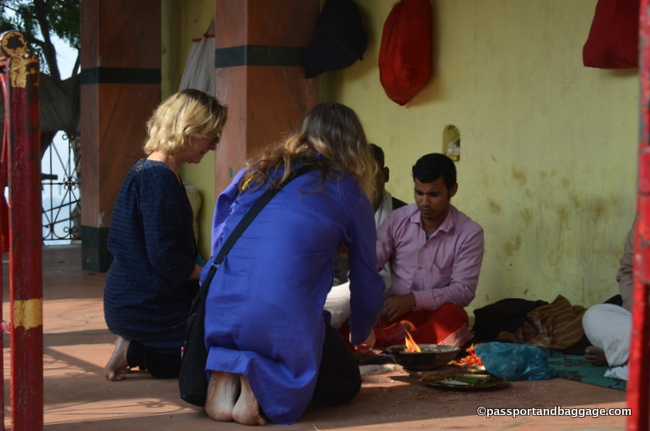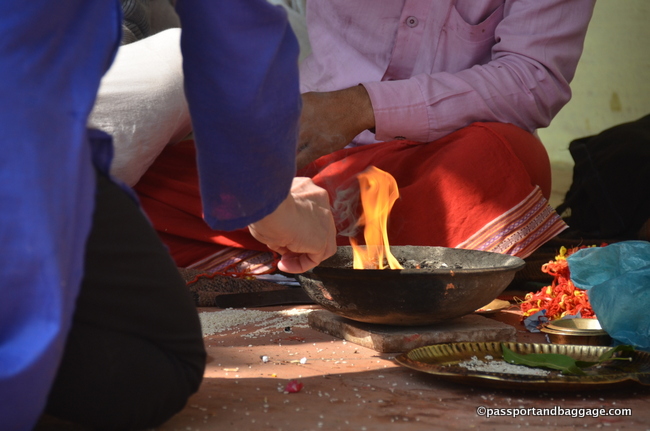December 8, 2018
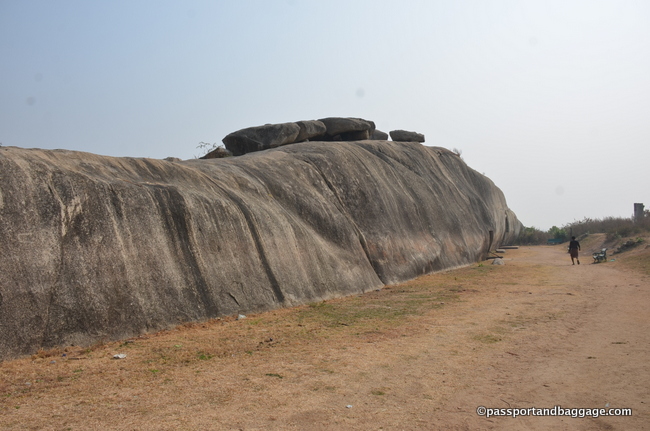 The Barabar Hill Caves are the oldest surviving rock-cut caves in India, and date from the Maurya Empire (322–185 BCE), some have inscriptions from the Ashokan era. During this period rock-cut architecture had become the key feature of Indian architecture.
The Barabar Hill Caves are the oldest surviving rock-cut caves in India, and date from the Maurya Empire (322–185 BCE), some have inscriptions from the Ashokan era. During this period rock-cut architecture had become the key feature of Indian architecture.
Barabar Hill contains four caves: Karan Chaupar, Lomas Rishi, Sudama and Visvakarma.
The caves are located in the Makhdumpur region of Jehanabad district, about one hour outside of Bodhgaya.
 Most caves at Barabar consist of two chambers, carved entirely out of granite, with a highly polished internal surface and a truly amazing echo effect making for a beautiful sound when we stood inside enjoying chanting by one of my friends.
Most caves at Barabar consist of two chambers, carved entirely out of granite, with a highly polished internal surface and a truly amazing echo effect making for a beautiful sound when we stood inside enjoying chanting by one of my friends.
The oldest of the caves is the “Lomas Rishi cave” with the first known use of the “Chaitya arch’ in stone which would later be replicated in caves across India.
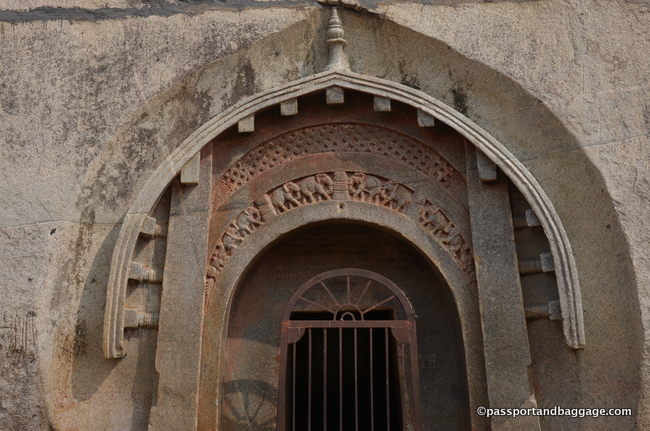
The sculptured surround to the entrance to the Lomas Rishi Cave is the earliest survival of the ogee shaped “Chaitra arch”.
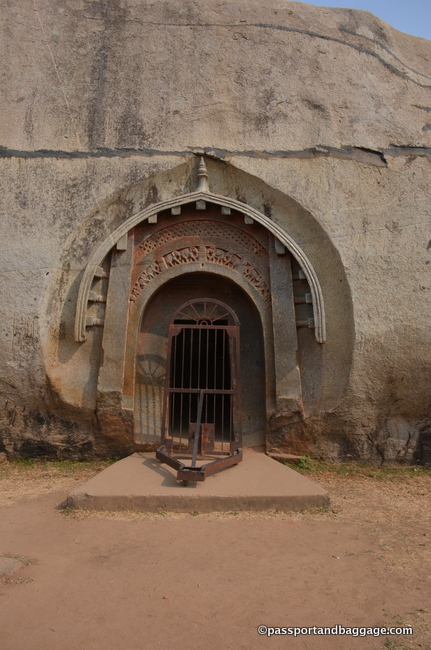
The famous carved door of Lomas Rishi cave, dates to approximately 250 BC, making it the first known Maurya relief.
A chaitya, or chaitya hall, refers to a shrine, sanctuary, temple or prayer hall in South Asian religions. The term is most common in Buddhism.
Lomas Rishi has no Ashoka inscription, perhaps because it has never been completed due to structural rock slide problems. It is generally considered that is is also from around 260 BCE. There is, however, an inscription above the entrance, from the 5th century CE.
One inscription in the area says that the four caves were given to the Ajivika monks by King Ashoka in 261 BCE.
A later inscription found on one of the hills speaks of Dasaratha Maurya, the grandson of King Ashoka, which gives the Ajivikas continued use of the caves, it states: ‘The Vahiyaka cave has been given by Dasaratha, dear to the gods, to venerable Ajivakas, to be a place of abode during the monsoon as long as sun and moon shall endure’
The Ajivaka faith came about around the time of Buddhism and Jainism, during tumultuous times of India, the Ajivaka faith did not survive. The founder of the Ajivika faith was a preacher named Makkhali Gosala, a contemporary of Gautama Buddha and Mahavira, one of the high preachers of Jainism.
The faith died out around the 5th century CE, but it is not known why. After the Avijikas died out the caves were occupied by Buddhists, Jains, and Hindus.
Ashoka dedicated the caves of Sudama and Visvakarma to the Ajivikas in the 12th year of his reign, when his religious evolution towards Buddhism was not yet fully completed. Later, Ashoka built the caves of Lomas Rishi and Karan Chaupar in the 19th year of his reign, at a time when he had become a firm advocate of Buddhism, so it is possible they were dedicated to Buddha, but there are no inscriptions to verify this, and this theory conflicts with the inscription stating that Ashoka’s grandson gave the Avijikas continued use of the caves.
E.M. Foster used these caves as the setting for the misunderstood violation incident in his novel Passage to India.
Very close to the caves, but up a very steep hill is Vanavar Shiv Mandir (Hindi temple). We could not leave without exploring.
This hill, known as Siddheshwar Peak, has been a place of Hindu pilgrimage for many centuries and accounts for the majority of local visitors to the site. The three of us were the only people at the Barabar caves, but we encountered many many people when we climbed up and down to the Shiva Temple.
Siddheshwar, which is also a boy’s name in India, means ‘ Lord of the Blessed’.
The present temple is fairly new and was built atop one that had disappeared by 1993, the original was possibly from the Gupta period (300-500 BCE), the local legends attribute it to Bana Raja, the father-in-law of the King Jarasandha of Rajgir.
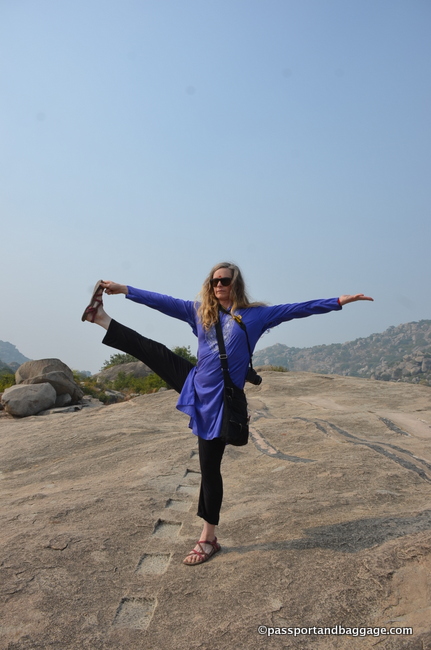
The climb was rather arduous in the Indian heat, Yoga Teacher/Landscape Architect Stefanie decided a stretch was needed on our way down the hill
There are conflicting stories about these holes. Our guide insisted they were the steps carved by Ashoka to get to the caves. However, another, and possibly more logical explanation is that they were used in the rock cutting process. Wooden wedges were pounded into pre-cut holes that were all in a row, then water was poured onto them. The dry wooden wedges would soak up the water and expand, and split the stone. However, I have a problem with this explanation, because the holes were rather too large for splitting the stone efficiently.
There are more than 1,500 known rock cut structures in India. Many of these structures contain artwork of global and historical importance, and most are adorned with exquisite stone carvings. These ancient structures represent significant achievements in both structural engineering and craftsmanship.

